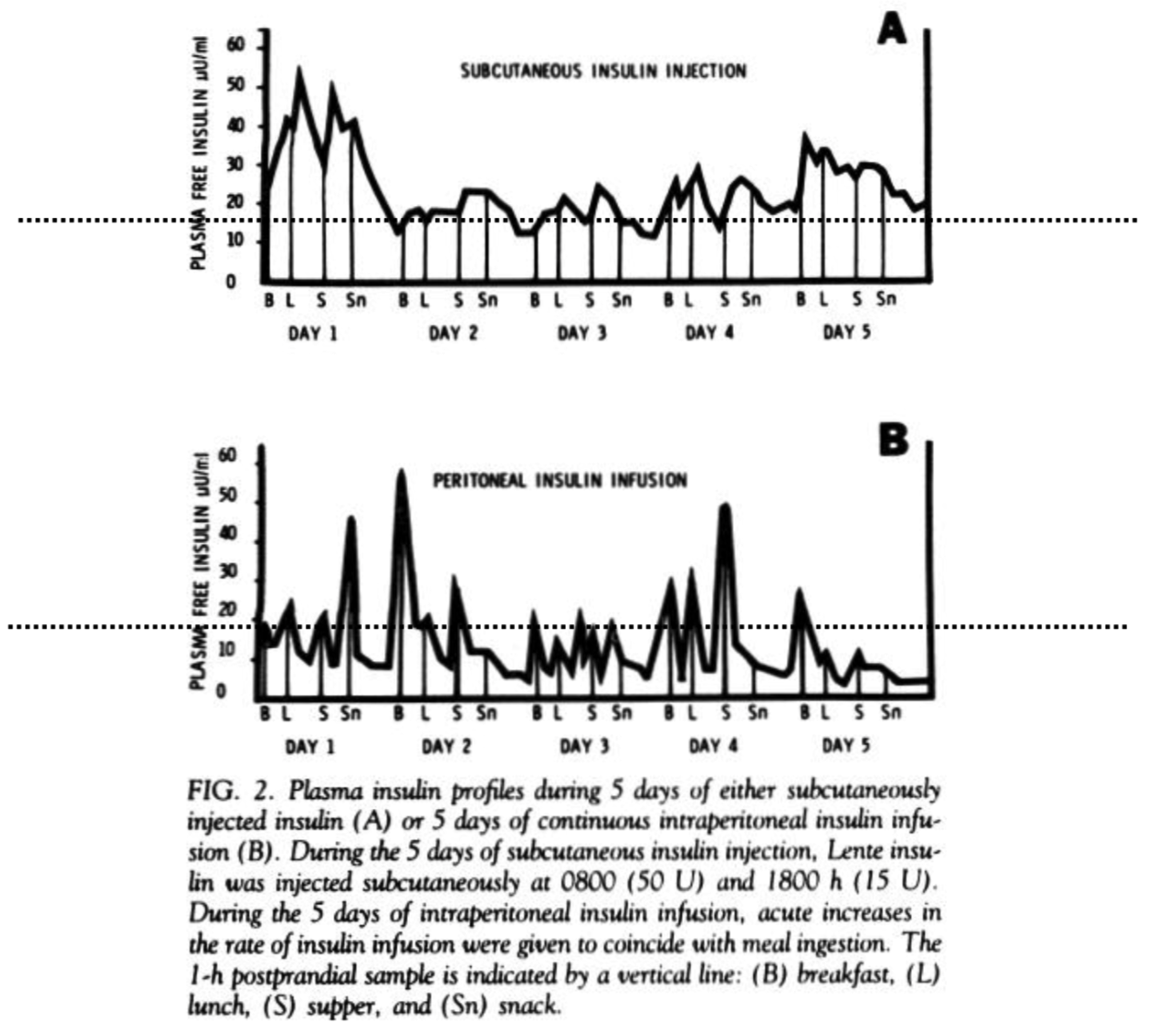In 1979 a paper was published that demonstrated the difference between subcutaneous insulin delivery and intraperitoneal insulin delivery in laboratory rats that had been made diabetic.
Title: Importance of Hepatic Portal Circulation for Insulin Action in Streptozotocin-Diabetic Rats Transplanted with Fetal Pancreases
Authors: Brown, Mullen, Clark, Molnar & Heininger
Published In: Journal of Clinical Investigation. Volume 64 (Dec 1979) PP 1688-1694
SIMPLIFIED OVERVIEW: Rats that were made diabetic received pancreas transplants. When the insulin from the transplants was routed to the general circulation (subcutaneous insulin goes to the general circulation) the diabetes improved but was still far from normal. When the insulin from the transplants was shunted to the liver (intraperitoneal insulin goes to the liver) the diabetes disappeared completely.
MORE DETAIL:
Step 1: The rats are given the drug Streptozotocin (a drug that damages the insulin-producing beta cells of the pancreas). All of the rats become diabetic. Blood sugars are over 500mg/ml and all show excessive urine formation.
Step 2: Fetal pancreases from genetically identical rats are transplanted beneath the kidney capsule of the now diabetic rats. This placement results in insulin being sent to the general systemic circulation – approximating subcutaneous insulin delivery. Blood sugars and urine formation improve but are still significantly higher than normal.
Step 3: A shunt is implanted that directs the insulin from the fetal pancreases to the liver – approximating intraperitoneal insulin delivery. Blood sugars dropped to normal levels and urine flow decreased to normal – there was no sign of diabetes.
Step 4: Then they removed the shunts – which again sent the insulin to the general systemic circulation – approximating subcutaneous insulin delivery. Blood sugars and urine formation once again are significantly higher than normal.
From these results it is clear that where insulin is delivered is very important. Delivering insulin to the liver (as is the normal situation when there is no diabetes) completely reverses diabetic symptoms while delivering insulin to the general circulation, as subcutaneous insulin delivery does, improves the diabetic state but does not normalize it.
The authors conclude by writing (the added emphasis is ours):
“These studies demonstrate that shunting the venous drainage of pancreases transplanted under the kidney capsule from the inferior vena cava to the hepatic portal vein reverses to normal all measured parameters of the diabetic state. These include plasma glucose, the rate of glucose disappearance from blood after injection, and the IRI levels in blood before and after glucose injection. Urine volume and glucose content became normal and body weight gain increased.”
In other words, insulin delivered to mimic subcutaneous insulin delivery partially reversed the diabetic state but when that same insulin was directed to the liver (as it is in the normal state) the diabetes disappeared completely. Clearly, insulin works best when delivered to the liver.
CHERYL – I HAVE THE ENTIRE PAPER IN PDF FORM – HOW DO I LINK TO IT ON MY WEBSITE?

